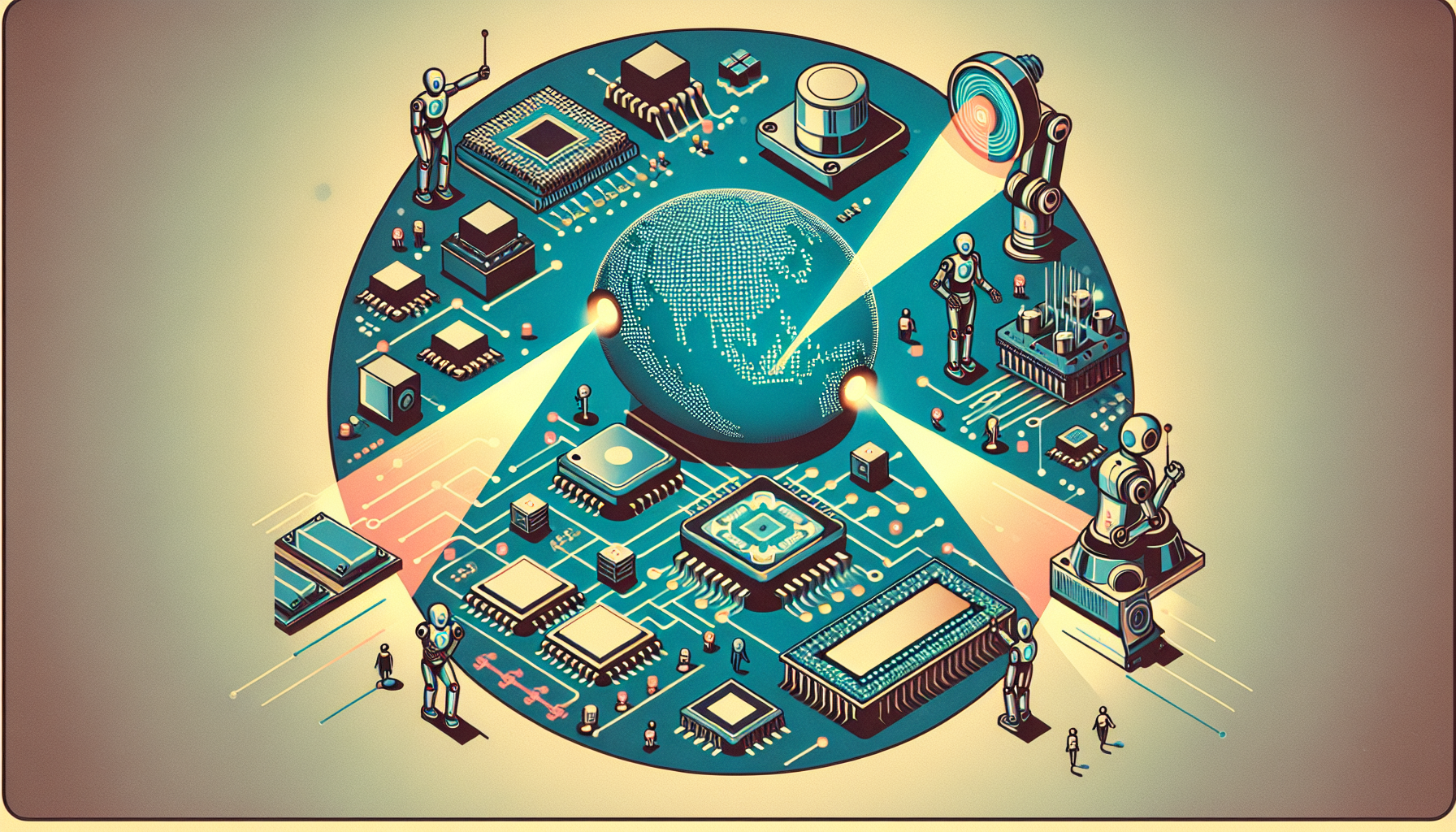The Consumer Electronics Show (CES) 2025 set the stage for a remarkable leap in technology, spotlighting the fusion of artificial intelligence (AI) with hardware devices. This year’s gathering highlighted pioneering strides, especially led by renowned global firms and trailblazing Chinese companies, bringing a treasure trove of AI-powered innovations to the fore.
AI Processors and Computing
Leading the charge in AI integration were prominent processor manufacturers. Companies like AMD, Intel, and Qualcomm revealed their latest AI-focused processors. AMD brought forth the Ryzen AI Max Series, Ryzen AI 300 Series, and Ryzen 200 Series, crafted for superior computing needs across consumer and business landscapes. These Ryzen PRO Series processors cater to enterprise-level security and manageability, underscoring the industry’s dedication to advancing AI in personal and corporate computing.
AI-Driven Innovations and Infrastructure
Nvidia’s CEO Jensen Huang highlighted the swift evolution of AI, shifting from perception and creation to what he calls “physical AI.” This innovative realm sees AI processing, reasoning, planning, and acting in real-time settings. Huang introduced Agentic AI, a real-time AI assistant, and the Cosmos World Foundation Model, aimed at boosting robotics’ navigation in the physical world. These advancements hold promise in AI factories, aiming to enhance intelligence and productivity across sectors.
Chinese Innovations in AI Hardware
Chinese companies made a substantial mark with over 1,000 participants, showcasing both major brands and emerging startups. Collaborations like BOE with Qualcomm introduced an “All-in-one AI Media Center” boasting a 65-inch Ultra HD display loaded with diverse AI-based features. Lenovo stunned with a series of AI-powered innovations, such as Lenovo AI Now, an on-device personalized AI assistant built on Meta’s Llama 3 model, and the world’s first rollable PC. Their “Smarter AI for All” vision integrates advanced AI into Copilot+ PCs, reshaping user experiences in work and leisure.
AI-Powered Devices and Wearables
CES 2025 also unveiled a variety of AI-integrated consumer gadgets like necklaces, eyewear, and even intimate technologies. While these personal devices push the limits of computing and connectivity, their practical value is under scrutiny. Experts stress the need for these devices to offer distinct benefits beyond current smartphones. Success stories like Ray-Ban Meta smart glasses and Nvidia’s Project Digits personal AI supercomputer illustrate how AI hardware can enhance experiences through unique and functional applications.
Robotics and Autonomous Systems
Robots stole the spotlight, with companies like Unitree Robotics from China displaying humanoid and four-legged robots. These devices, such as the G1 humanoid robot, show impressive flexibility and movement, appealing to both consumer and industrial realms. Pet-like robots, like Ropet, capable of sensing and responding to users’ emotions, captivated attendees, emphasizing AI’s growing ability to assist and interact with humans in numerous environments.
Challenges and Future Directions
Despite the excitement, the road ahead has hurdles. Smaller companies face tough competition against giants like OpenAI and Google, which command vast resources and established AI frameworks. To shine, businesses must narrow their focus on specific solutions, heed user privacy, and ensure effortless AI integration into devices that truly enhance daily life. The trajectory for AI hardware will likely prioritize user-centric design, practical use, and strong data security to foster consumer trust.
Market and Economic Implications
A bright future lies ahead for consumer electronics, with global sales poised to hit $537 billion in 2025. Hardware revenues are projected to reach $353 billion, with software and services anticipated to grow to $184 billion. This growth highlights the soaring importance of AI-driven innovations in consumer electronics. Yet, concerns about market consolidation, digital inequality, and the need for regulatory measures to safeguard users and promote responsible innovation loom.
In summary, CES 2025 marked a pivotal moment for AI integration in hardware, unveiling an array of groundbreaking devices and solutions. As the industry advances, the aim is to provide meaningful, practical, and secure AI-enhanced products that address consumer needs and foster trust. The path forward for AI hardware is set for transformational changes, guided by the pursuit of real innovation, user privacy, and ethical development.

Leave a Reply